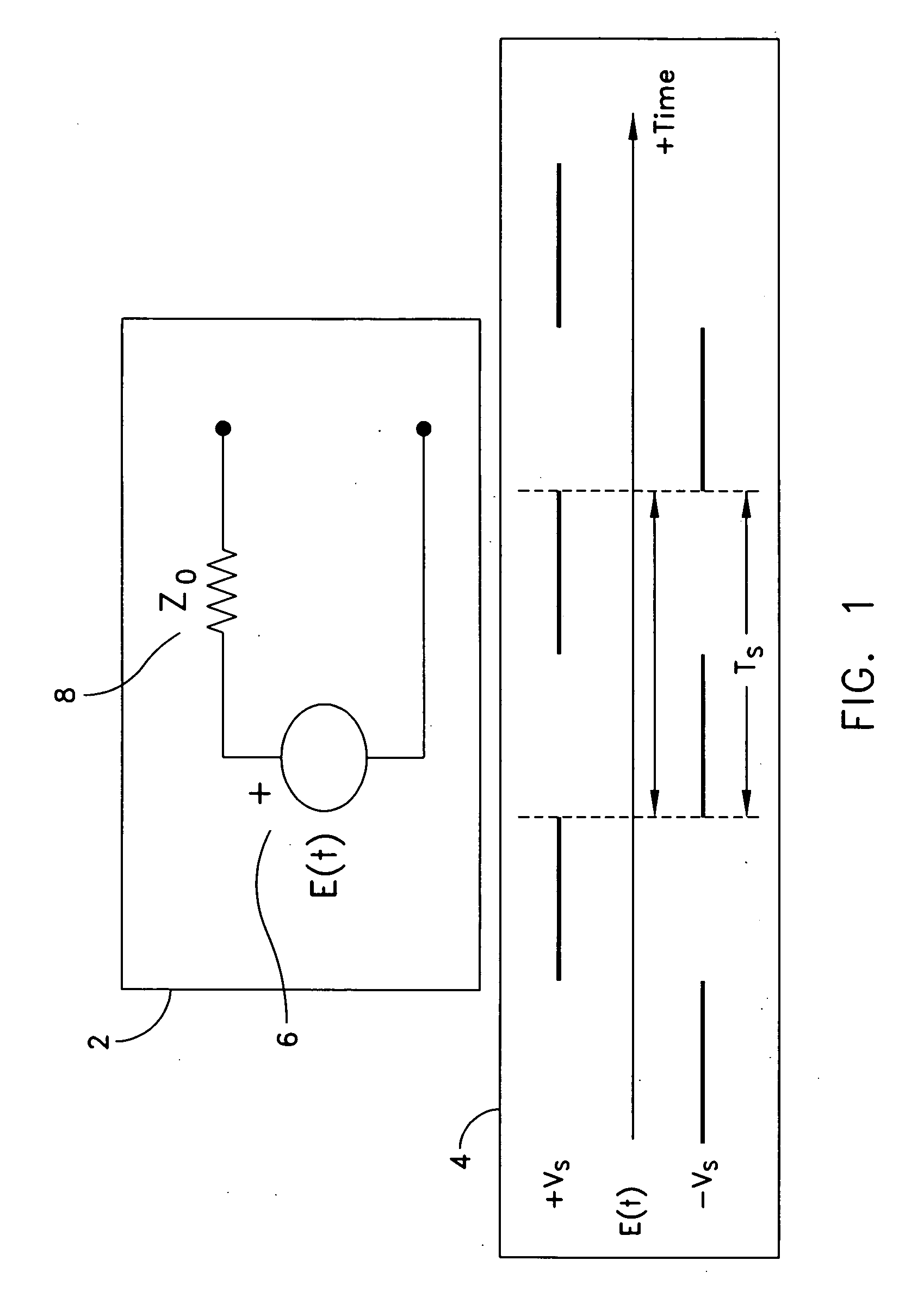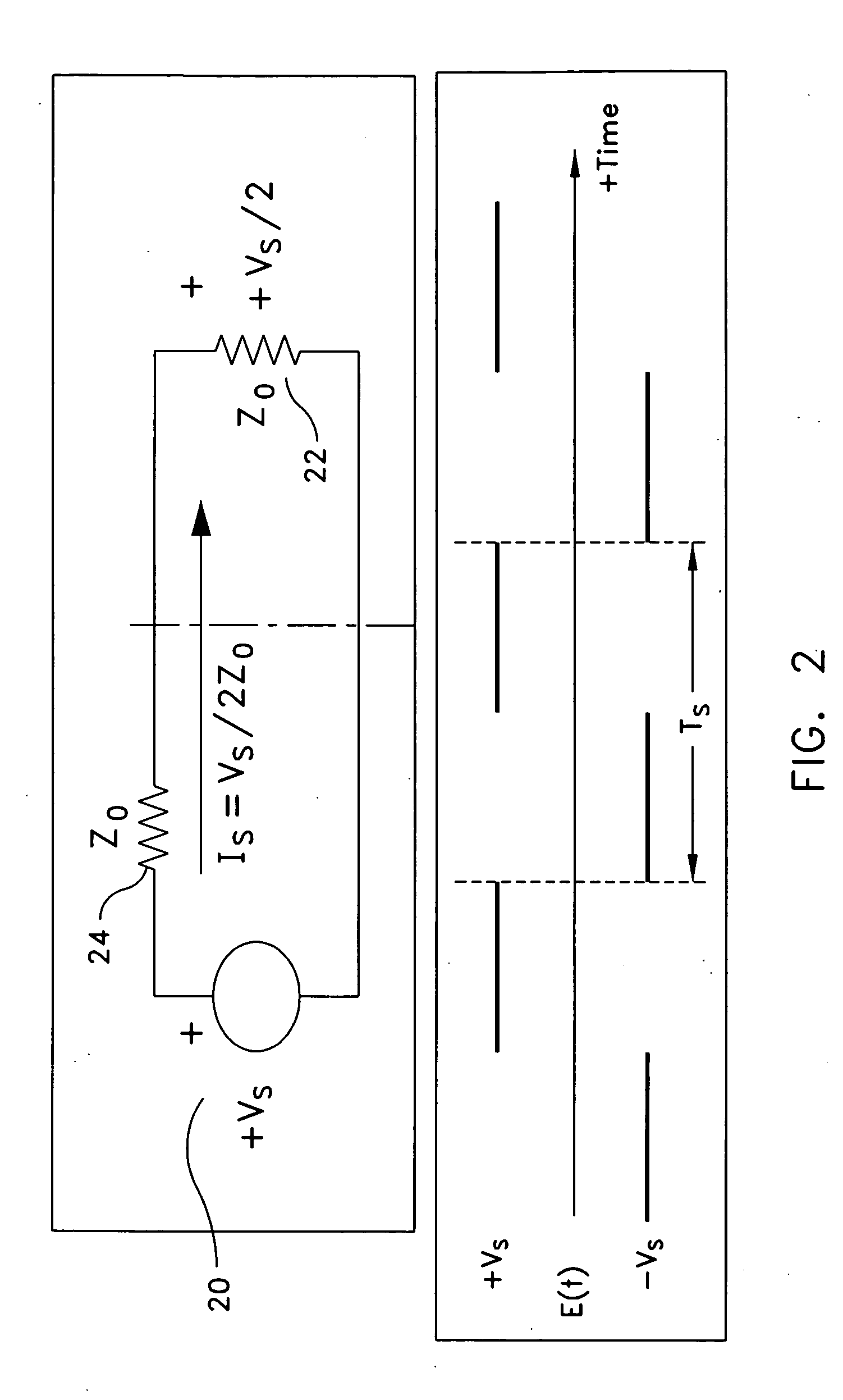System and method for improving the efficiency and reliability of a broadband transistor switch for periodic switching applications
a broadband transistor and periodic switching technology, applied in electronic switching, oscillator generators, pulse techniques, etc., can solve the problems of difficult supply of direct current (dc) power for operation, voltage loss, etc., to optimize switching performance, and reduce the cost of operation.
- Summary
- Abstract
- Description
- Claims
- Application Information
AI Technical Summary
Benefits of technology
Problems solved by technology
Method used
Image
Examples
Embodiment Construction
[0046]The description of a switch driver design is presented in five sections. In a first section, concepts are introduced that explain circuit operation in the following sections. In a second section, the operation of an energy efficient square-wave generator is disclosed. The square-wave generator circuit provides a foundation for the amplitude-phase modulator design disclosed in a fifth section. In a third section, an energy efficient [square-wave]-to-DC converter is disclosed, which provides a foundation for the switch driver design disclosed in a fourth section.
Introduction to the Disclosed Method
[0047]In FIG. 1, a Thevenin-Equivalent source 2 is shown. A voltage 4 of a signal generator 6 switches between a positive state, +VS and a negative state, −VS, in which the states have the same magnitude but opposite polarity. The switching operation is periodic with a period, TS, and with equal dwell times in each state. Thus, the average value of the generator voltage is zero. Furthe...
PUM
 Login to View More
Login to View More Abstract
Description
Claims
Application Information
 Login to View More
Login to View More - R&D
- Intellectual Property
- Life Sciences
- Materials
- Tech Scout
- Unparalleled Data Quality
- Higher Quality Content
- 60% Fewer Hallucinations
Browse by: Latest US Patents, China's latest patents, Technical Efficacy Thesaurus, Application Domain, Technology Topic, Popular Technical Reports.
© 2025 PatSnap. All rights reserved.Legal|Privacy policy|Modern Slavery Act Transparency Statement|Sitemap|About US| Contact US: help@patsnap.com



